Guryongsa Temple in
Chiaksan National Park
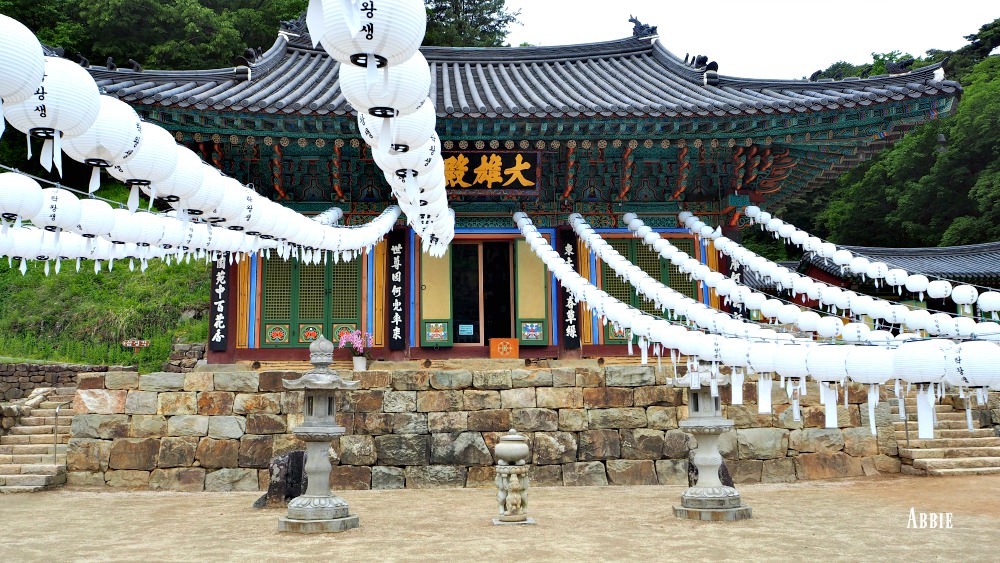 Daeungjeon Hall, the main hall where the main Buddha statues are enshrined, at Guryongsa Temple in Chiaksan National Park
Daeungjeon Hall, the main hall where the main Buddha statues are enshrined, at Guryongsa Temple in Chiaksan National Parkguryongsa temple in Chiaksan National Park
Guryongsa Temple in Chiaksan National Park is the number one (No.1) sight among the best sights in Wonju, Gangwon(do) Province, South Korea.
The temple was first established over 500 years ago by a famous Buddhist monk Uisang.
What makes it so famous? First and foremost, it is within the scenic spot of Chiaksan Mountain wherein both the temple site and nature blend-in and in total harmony.
Getting there takes only around two hours from Seoul and an hour from Wonju City (more on this below).
Now, as I am excited about trying to paint a picture of the place, you might also be feeling interested in finding out more. Let me work with some words, and if they don’t, just look at my photos. Hopefully, they can explain more.
entering the area
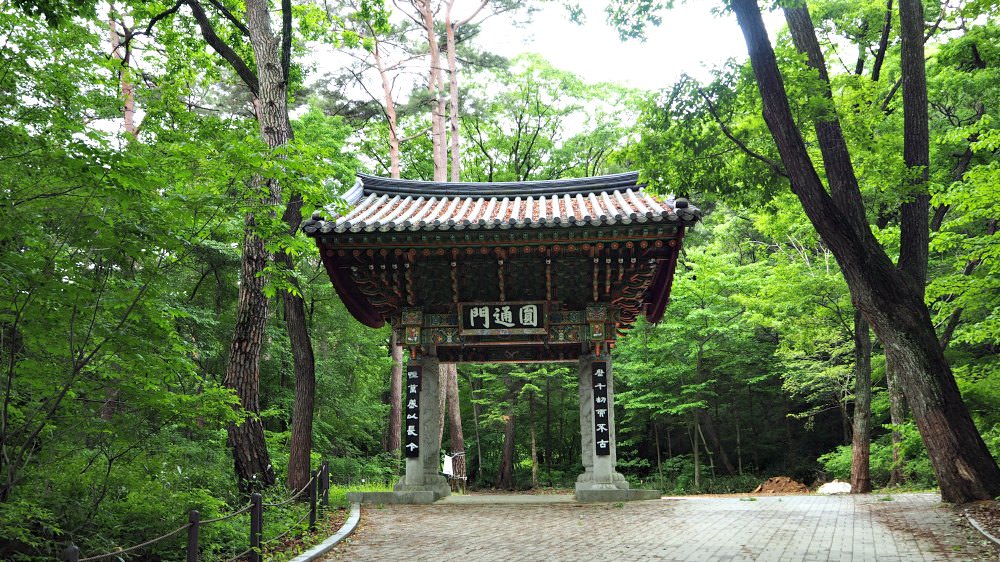 Entrance Gate of Guryongsa Temple in Chiaksan National Park
Entrance Gate of Guryongsa Temple in Chiaksan National ParkThe entrance to the temple area is actually less than a kilometer. You need to walk a bit amid giant pine trees and nature.
After obtaining your ticket from the ticketing booth (2,500 Won for an adult), you will be seeing the fresh stream flowing freely on your right-hand side.
A few meters further, you will be crossing a small bridge with sculptures of the dragons’ heads.
As you cross the bridge, you will slowly start to ascend then you will be greeted by two boards: guide map (on your right) and another board with a painting map and a historical description of Guryongsa area.
STORY: Guryongsa was first established by Monk Uisang over 500 years ago
This is the first entrance gate to the temple area.
You will not miss recognizing the sculpted dragons on the gate’s two pillars that support its extended roof. I found this gate very welcoming although the temple area itself is still about half a kilometer from it.
But the walk from this gate to the temple is effortless and a good start if you have decided to climb any hiking course in Chiaksan National Park.
Sari Stone Containers
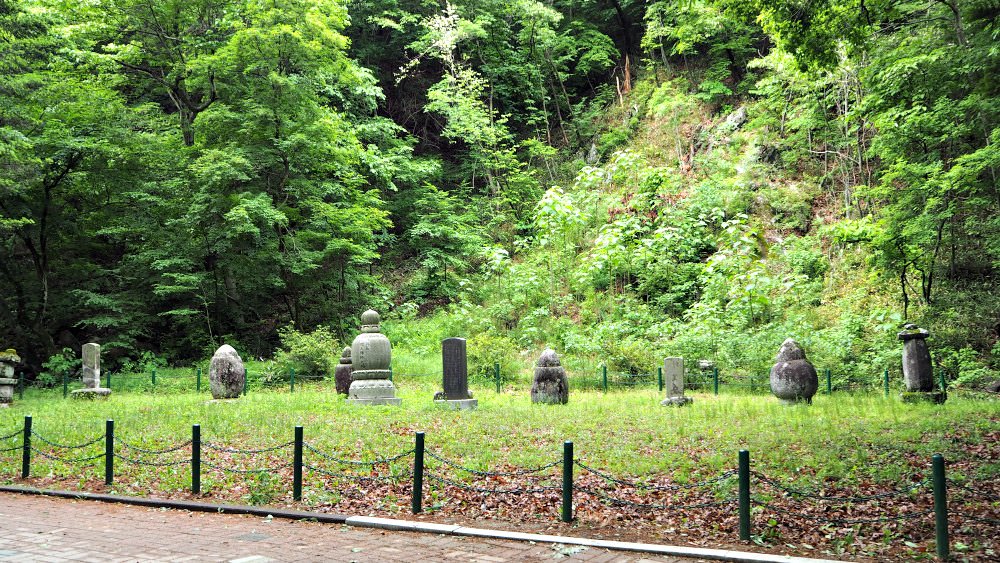 Stone caskets for the 'sari' of the holy monks
Stone caskets for the 'sari' of the holy monksRight after examining that gate, you will see right away a flat area where you will find stone (granite stone) sculpture in various designs in vertical positions.
No, they are not old stone lamps or lanterns. They are containers of the Buddhist monks' “sari” or holy remains (a small stone that remains from the dead bodies of monks considered sacred).
RELATED: See more Korean temples here
Path to the temple
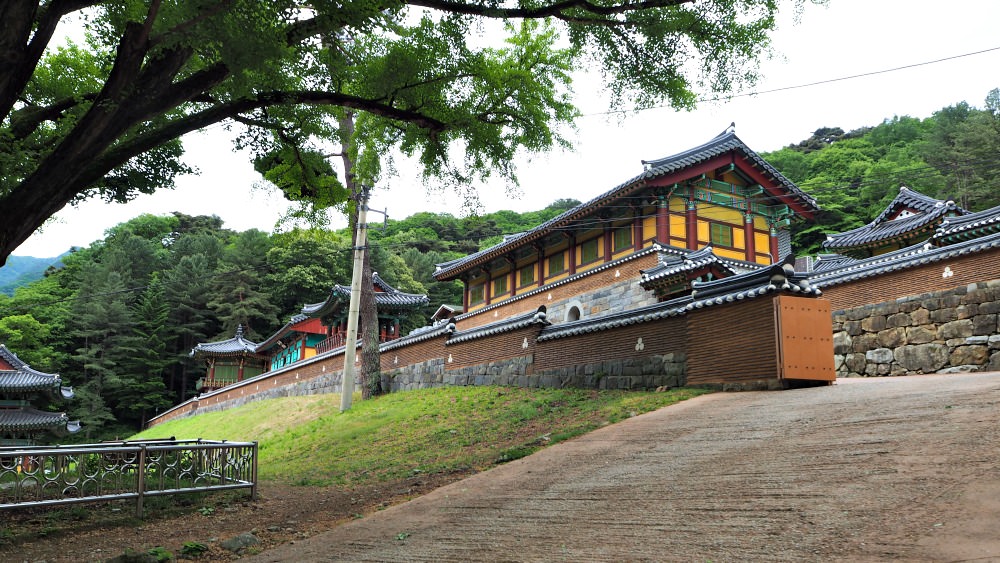 View of the temple area
View of the temple areaThen, over 30 meters ahead, you will begin to have a glimpse of the temple area. Since the temples are located some meters higher than the road you tread, you may ascend a bit more following the concrete path leading towards the temple’s entrance.
If you want to approach the temple area from lower ground, proceed or go straight to the spacious parking area, which is just right below the temple area.
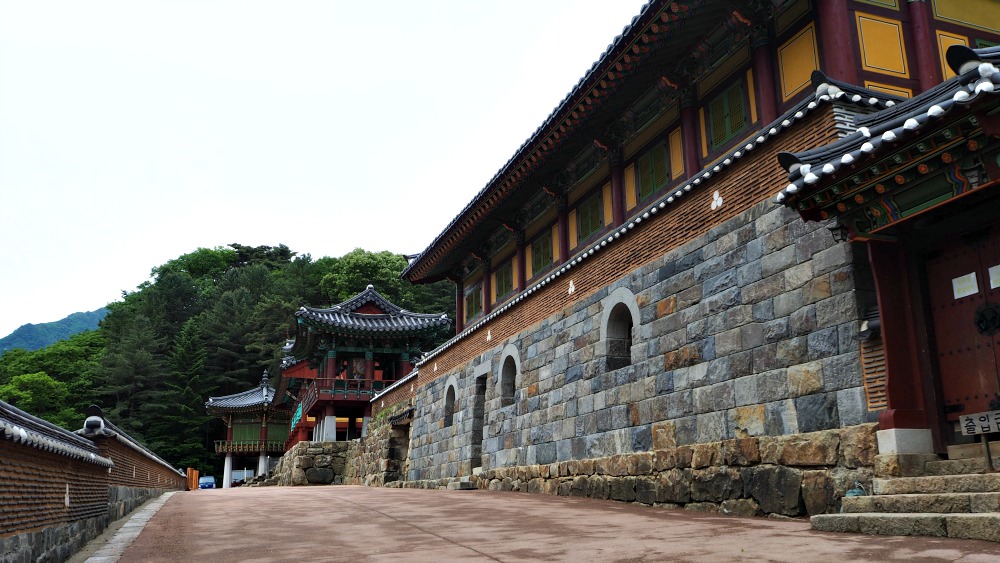 A short road infront of the temple area
A short road infront of the temple areaThe four heavenly kings
 The gate before entering the temple area where the Four Heavenly Kings are guarding
The gate before entering the temple area where the Four Heavenly Kings are guardingThey actually look scary to me (not so heavenly!).
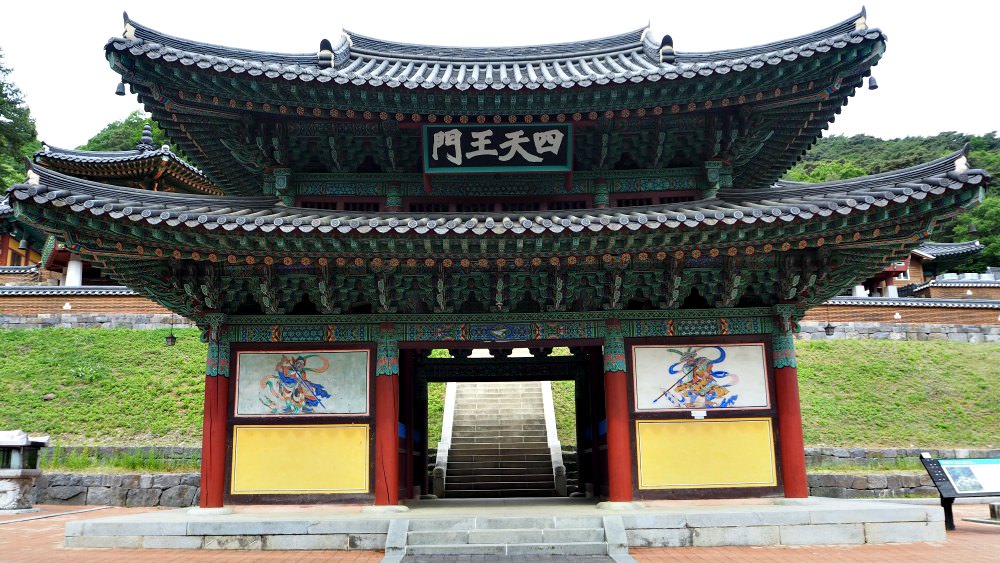 Front view of the gate being guarded by the Four Heavenly Kings
Front view of the gate being guarded by the Four Heavenly KingsIn this parking area, you will find a temple cafe and the main gate of the temple where the Four Heavenly (scary-looking) Kings guard the temple 24/7 with their respective weapons and instruments.
Buddha and Turtle
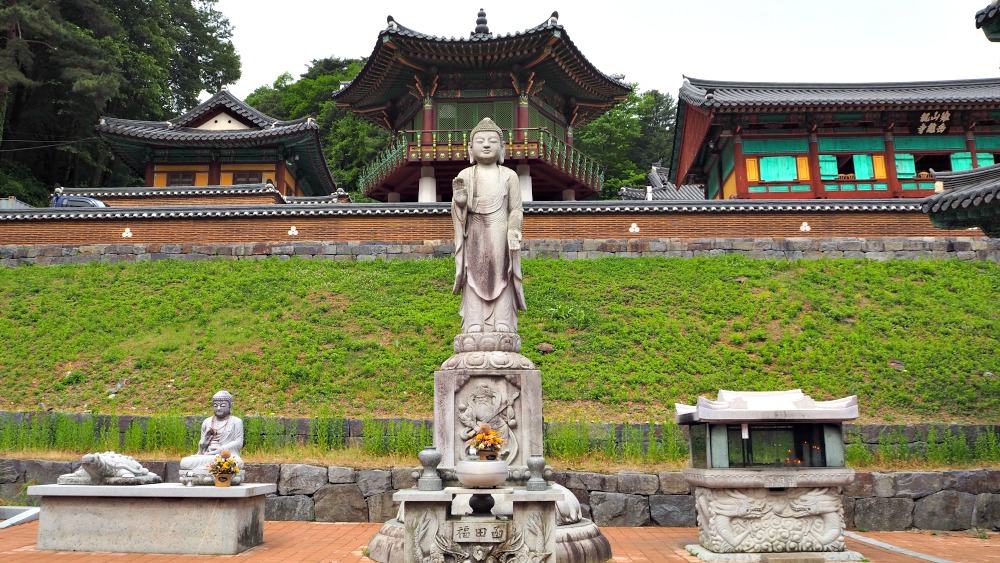 Turtle and Dragon. 'Gu' for turtle and 'Yong' for the dragon, and 'sa' for temple
Turtle and Dragon. 'Gu' for turtle and 'Yong' for the dragon, and 'sa' for templeOn the left-hand side of the main gate, you will not miss seeing Buddha’s standing stone sculpture and the turtle on its right side. The turtle seems to indicate that the name of the temple partly (or half of it) derives from the Hanja character ‘gu’ for the turtle.
Passing through the Kings, you have to climb the steps, which requires the guest with full capacity to climb up. (That is why the other concrete road was built for those who have difficulties in climbing these steps, or those who are using wheelchairs or scratches).
Assuming that you will get to the temple area without any problem, let me describe briefly the structures and buildings below...
Structures and Temples
According to the records about Guryongsa Temple, it used to have 99 rooms in total when it was first established. Now, there are only a few that are being maintained and being used.
What happened to the other structures (or rooms)? Most temples are made of wood, and so they wear out or gets decayed. Second, some were consumed by fires, while the others got destroyed by people or burnt down during the invasions (and wars).
Lecture Hall
I think this is the only entrance to the temple ground, which directly leads you to the main hall. In this building, if you will examine, you’ll see the description which says that the foundation stones are old.
I think it means that the foundation stones are originals while the wood pillars (they may be old) are not due to decay (caused by changing temperatures, moisture, and such natural elements)
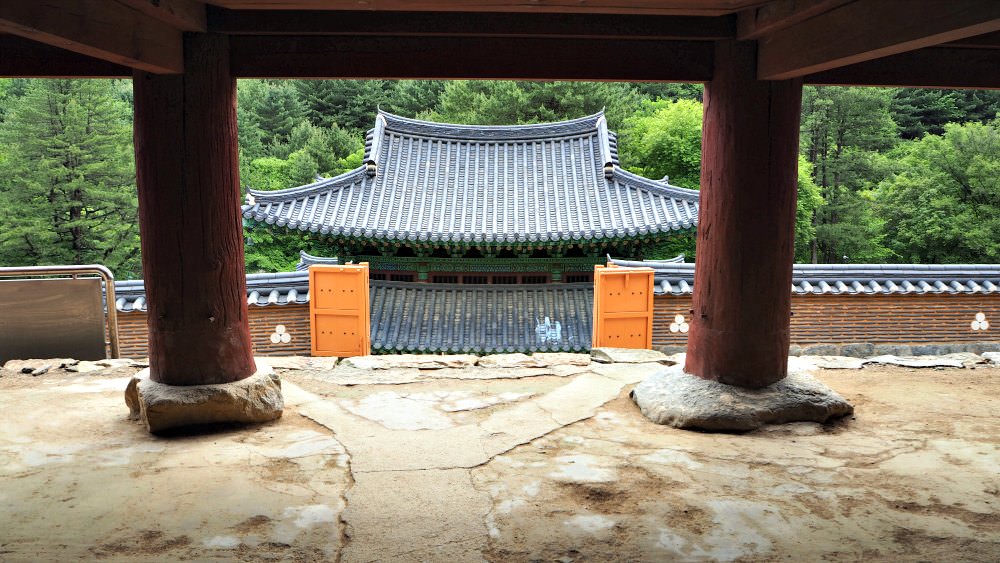 Old foundation stones are still being used in supporting the main pillars of this building (lecture hall)
Old foundation stones are still being used in supporting the main pillars of this building (lecture hall)Bell Pavilion
You will see this Bell Pavilion on your right-hand side when entering the area. From this vantage point, you have a beautiful view of the mountains and the forested stream area.
 The Bell Pavilion houses the religious items including the bell, wooden fish, and drum
The Bell Pavilion houses the religious items including the bell, wooden fish, and drumStone Pagoda
This stone pagoda is a recent addition to the temple area. But I am convinced that its design is based on the original stone pagodas sculpted during that period. A beautiful photo of the temple area is captured with this stone pagoda at the center!
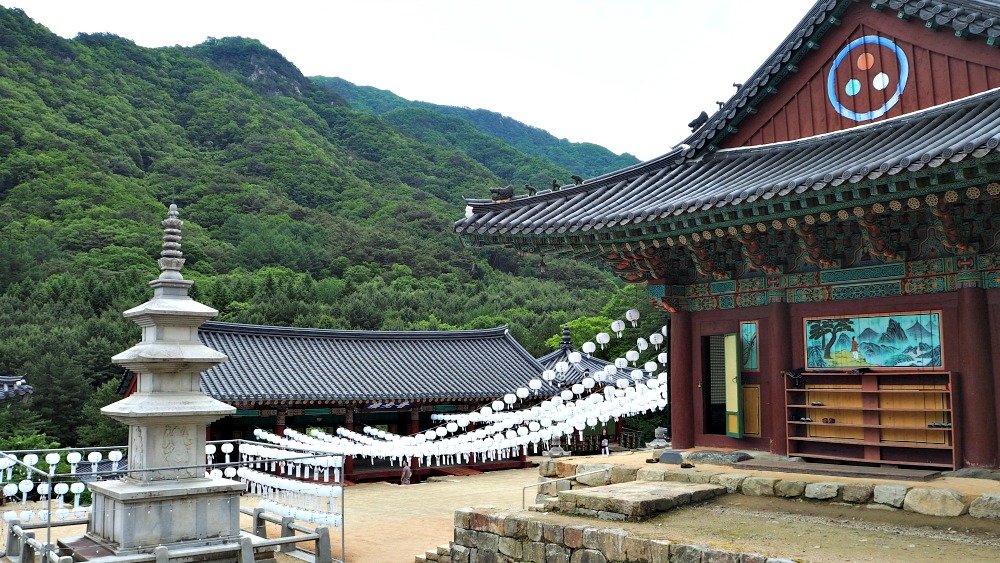 Serene atmosphere at Guryongsa
Serene atmosphere at GuryongsaDaeungjeon Hall (Main Hall)
Although there are lanterns still hanging over after the celebrations of Buddha’s birthday a month after I took this photo, Daeungjeon Hall looks great!
The white colors seem to be in harmony with the surrounding elements. (The varied colors of lanterns during the birthday celebration seem too strong for me--personally!).
 Daeungjeon Hall (main hall and enshrines the temple's biggest Buddha statues)
Daeungjeon Hall (main hall and enshrines the temple's biggest Buddha statues)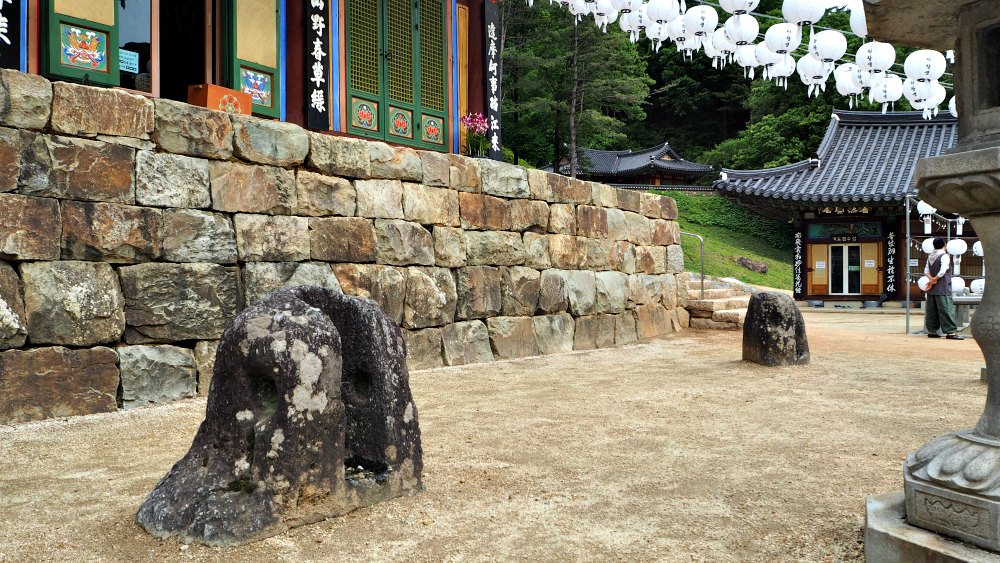 Ancient stone tools for temple use such as announcements
Ancient stone tools for temple use such as announcements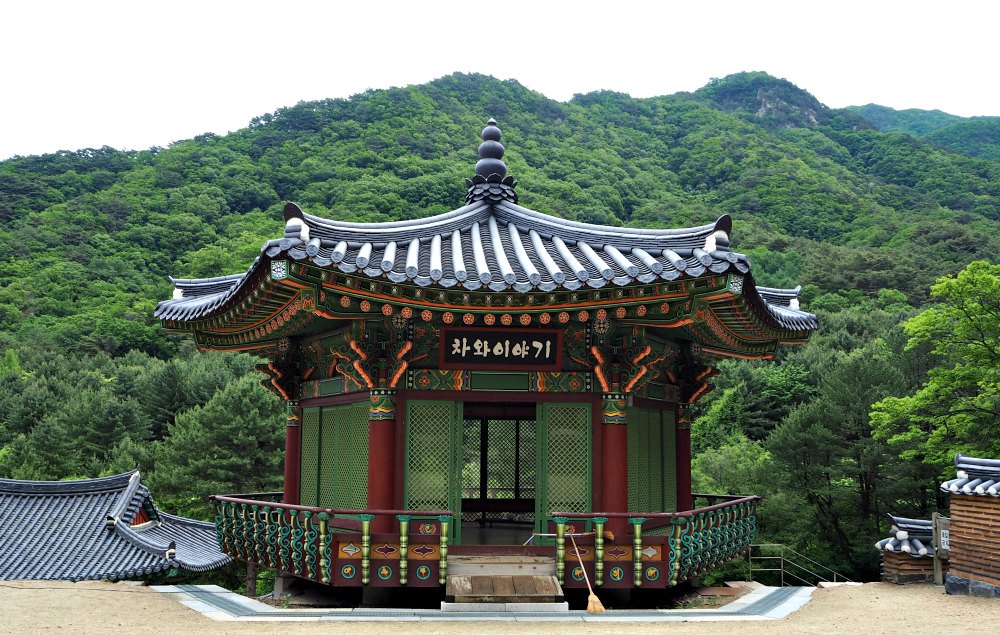 'cha-wa-iyaki' means Tea and Story in Korean
'cha-wa-iyaki' means Tea and Story in Korean I asked one of the staff who was not confident in taking this photo
I asked one of the staff who was not confident in taking this photo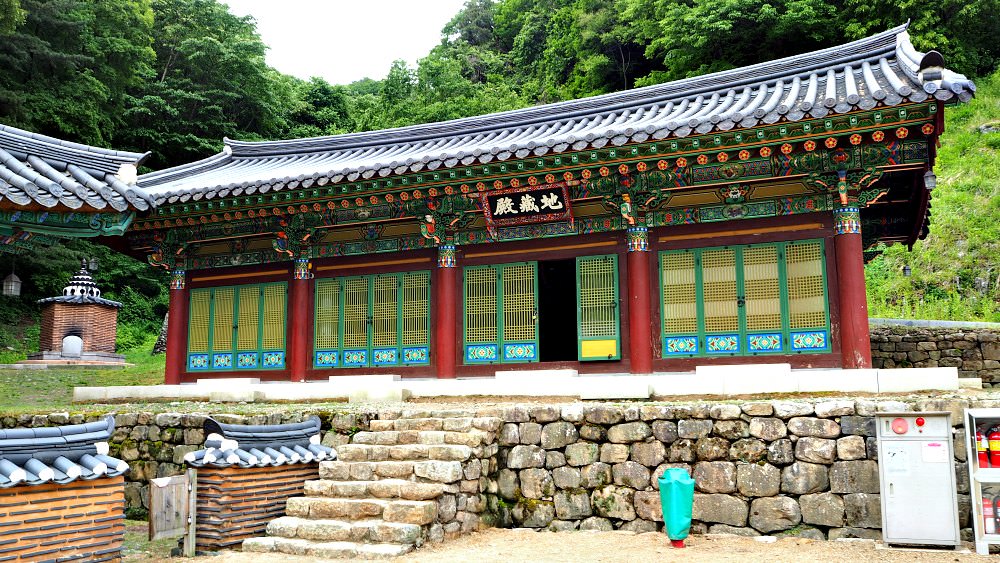 The temple that enshrines other Buddha statues and Boddhisatvas beside Daeungjeon Hall
The temple that enshrines other Buddha statues and Boddhisatvas beside Daeungjeon Hallbackground of guryongsa temple
The No. 1 Sight in Wonju
Just like most religious places in various parts of the world during the medieval period, the Korean Buddhists temples also kept records on their affairs.
For this reason, better historical backgrounds through the records confirm most of the events that occurred in the area as well as the items (structures, religious tools, etc.).
Although only a few have survived from the weather conditions, time, and unfortunate events, one can still observe and enjoy some items extant inside the temple area.
In short, due to the location, historical background, significance, and above all, the beauty of the temple that harmonizes with its surrounding, are the factors why it is considered the number 1 scenery among the 8 Wonju sceneries.
The Legend of Guryongsa Temple
When the temple founder Uisang, a Buddhist monk of the Silla Dynasty, started to build Guryongsa Temple, an interesting legend was told.
Nine dragons occuppied the pond of the temple site when Uisang tried to fill it up for the foundation of his temple. In their anger, the nine dragons brought down rain to the whole mountain (Chiaksan Mountain).
The pond was filled up with, but the monk drew out his ‘staff’ and stuck it into the pond, causing it to dry out. This prompted the nine dragons to flee and never return.
The temple’s name, Guryongsa, derived from that legend which refers to the nine dragons (‘gu’ for nine, ‘ryong’ for the dragon, and ‘sa’ for temple). And that legend lives on.
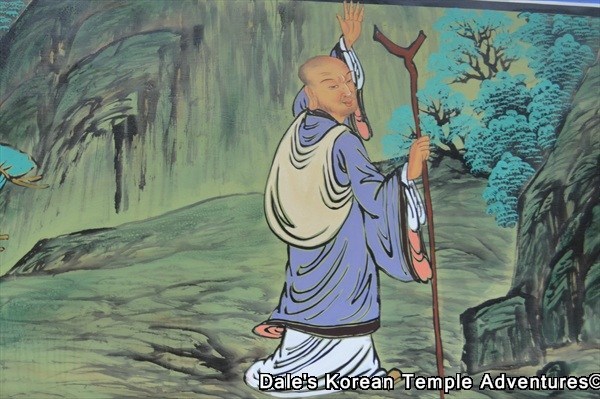 Monk Uisang, 625-702 AD (Credit: Dale @koreantemples.com)
Monk Uisang, 625-702 AD (Credit: Dale @koreantemples.com)Historical Background
When Uisang founded the temple in 668 during the reign of King Munmu of Silla Kingdom, Guryongsa Temple has immediately established its status as the best temple at that time.
After its foundation over 500 years back, Guryongsa Temple remains to be called as the top temple of Youngseo region. Several famous Buddhist monks lived here, including Doseon, Hyujeong, and others.
Due to some reasons, however, the temple’s status declined in the middle of the Joseon Period.
During the 32nd year of King Sukjong’s reign, the temple was renovated. A historical record (Yeojidoseo Wonjumokjo) shows that there were ninety-nine (99) rooms inside the temple site of Guryongsa which is at Chiaksan Mountain.
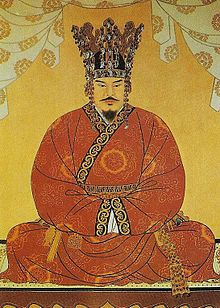 King Munmu (Credit: enacademic.com)
King Munmu (Credit: enacademic.com)The record also that there was a Yongyeon (literally means dragon’s pond) in front of the temple which was used for invoking rain during the dry season and stopping floods during the rainy season.
It also described that Guryongsa’s landscape used to include smaller temples (not anymore visible), such as Daeseung-am, Baekryeongdan, Wolbong-am, and even some scary stories of monks’ encounter with wild animals like a tiger.
Guryongsa Temple’s Designated Cultural Assets
Being an old and historic temple site, Guryongsa Temple in Chiaksan National Park still holds some of its treasures, including structures and other items. The following are some of them…
- Daewoonjeong (or Daeungjeon, the main hall) -- designated as No.24 Gangwondo tangible cultural asset (rebuilt when it caught fire in 2003)
- Bogwangru -- designated as No.145 Gangwondo tangible cultural asset
- Other structures: Samseonggak, Simgeomdang, Seolseondang, Jeokmukdang, Cheonwangmun, Jongru, Iljumun, and Guksadan, among other 19 units in existence
Environment and Surroundings
After having explored, examined, and enjoyed the temple area, you can also explore the nature and some structures surrounding Guryongsa Temple in Chiaksan National Park.
Here are what you can find around…
- Stream
- Trees
- Mountain
- Cascade
- Rocking Small bridge
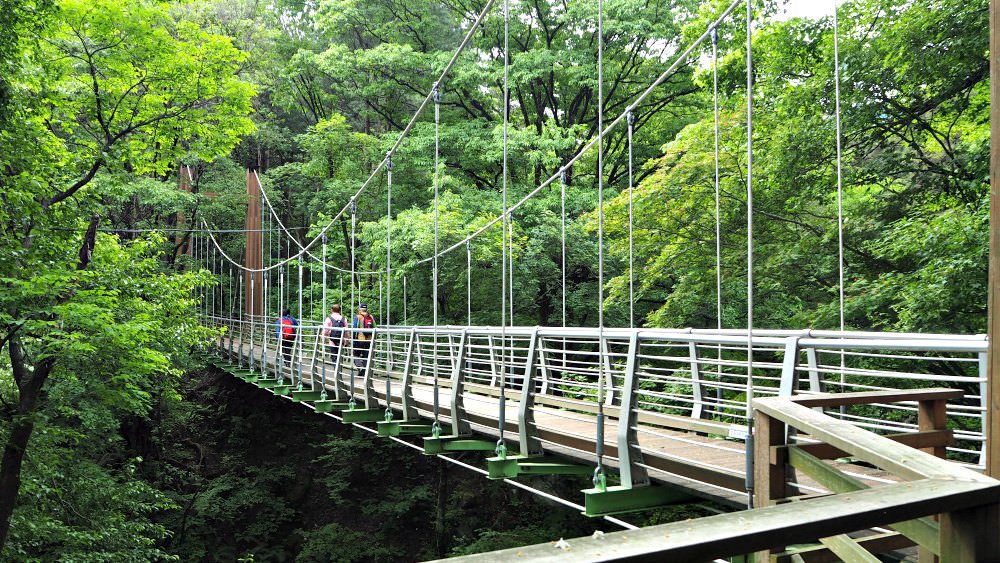 This is a rocking small bridge near Guryongsa Temple which leads to the peaks of Chiaksan Mountain.
This is a rocking small bridge near Guryongsa Temple which leads to the peaks of Chiaksan Mountain.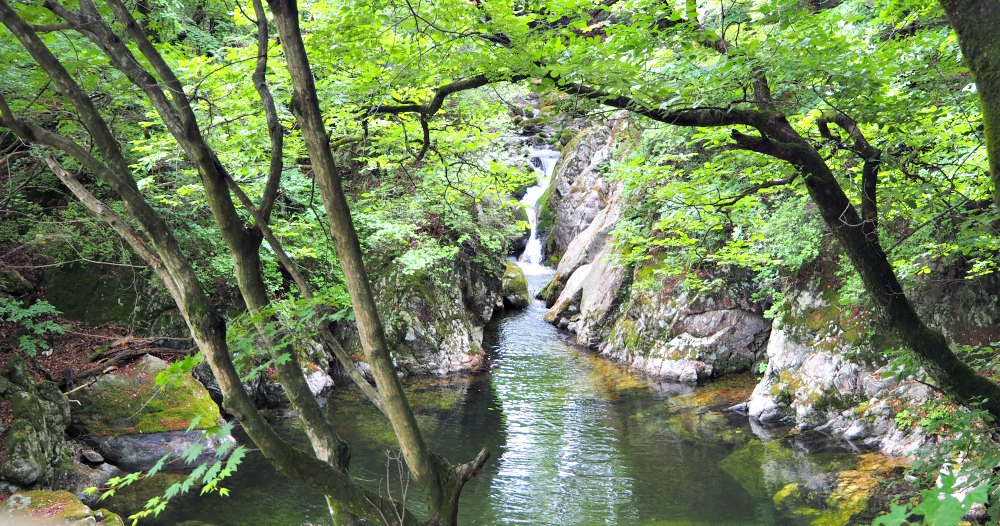 Waterfall near Guryongsa Temple in Chiaksan National Park
Waterfall near Guryongsa Temple in Chiaksan National ParkIf this is your first time to learn about Buddhism and thinking of visiting this place, there is no problem with that idea.
Buddhism religion is open to dialogue with other faiths. They don’t mind any other religious believer or non-religious to come over and see them.
The following sub-section describes who will be allowed to come and visit the temple area.
Who Can Visit Guryongsa Temple
Anyone who is able...
- Buddhism believers--definitely, and from other Buddhist groups as well
- Non-Buddhists. Buddhism does not exclude people with other faiths. It is one of the religions that embrace and dialogues with other faiths.
- Travelers. Yes, travelers and tourist alike are very much welcome. For the travelers who are interested in this religion can register for their ‘Templestay’ programme to experience or learn a bit about the religion and Buddhist ascetic life.
- Children. Kids and babies are also welcome here. Very active children, however, should be guided properly by adults to refrain from disturbing the serenity of the temple area.
- Groups. Groups of travelers or learners are welcome as well.
BUT, there is one condition…
All visitors are expected to keep the temple etiquette. The most important of them all is silence. Although you can talk, you are prohibited from talking loud with friends or any disturbing noise. It is a holy place!
Temple Stay Program
Not all temples have this programme because only those who have qualifications are given permission.
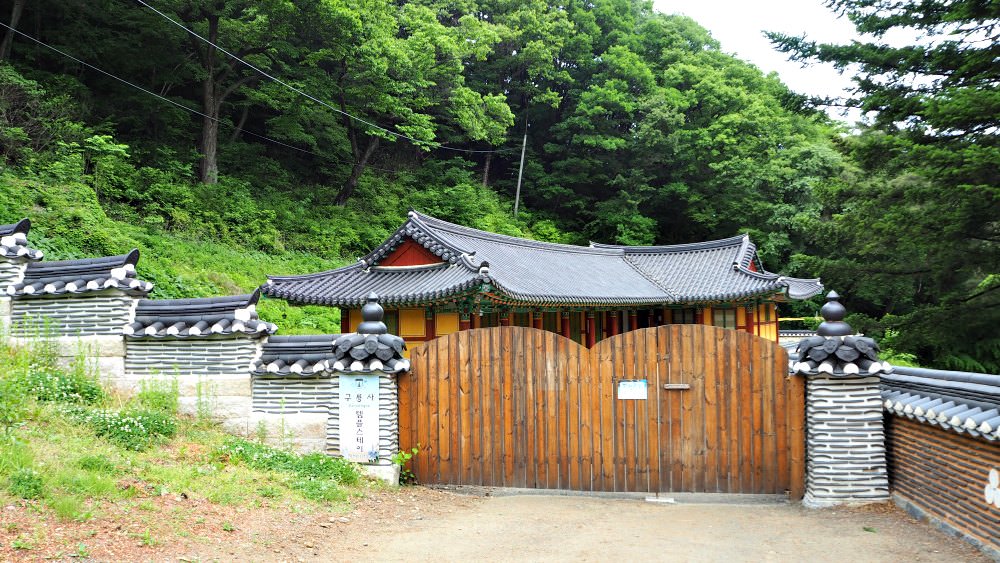 Quarters for templestay programme participants at Guryongsa Temple in Chiaksan National Park
Quarters for templestay programme participants at Guryongsa Temple in Chiaksan National ParkAddress: Wonju-si Gwangwon-do1029, Hakgok-ri, Socho-myeon
Reservation: https://eng.templestay.com/index2.asp?
Contact Details: 1330 Travel Hotline: +82-2-1330
(Korean, English, Japanese, Chinese)
For more info: +82-33-732-4800, +82-33-731-0503
Fundamentally, all temples that offer such programme have similar activities. Such activities that can be accomplished mostly for one day include the following:
- Mantra training, meditation techniques; religious item-making (paper lotus flower, lantern-making, etc.), tea-preparation ceremony, monk’s meal, among others.
For further information on templestay programme, please use the contact details above.
temple facilities
Monks have simple needs, as you already know! They have the basic necessities available for their ascetic life.
However, for the sake of the guests and other visitors who are maybe only traveling or those who are regularly supporting the temple, additional facilities are built at Guryongsa Temple in Chiaksan National Park.
The following includes both the usual temple facilities and additional ones...
- Tea Pavilion (part of the temple area, especially for the guests)
- Supplication Offers (this is for those who want to offer prayers which will be written on the roof tile)
- Washrooms. This is specially prepared within but outside the main temple area for travelers and other visitors of the place
- Resting area. I think this is located just near the biggest tree in the temple ground. There are benches available under the other trees.
- Parking area. This is located below the main temple area and where the gate of the Four Heavenly Kings is located
- Coffee and Convenience Shop. this is for all travelers and visitors or passersby. Drinks and some snacks are available. Sitting area and tables are also available. I got my ice Cappuccino here after my climb at Birobong Peak.
Getting to Guryongsa Temple
Reaching Wonju City and finally to Guryongsa Temple in Chiaksan National Park is easy. All intercity bus terminals and express bus terminals have daily schedules for Wonju.
If you are seriously thinking of going there, here are the public transports and connections you can take...
Buses (+Bus or taxi)
Seoul Express Bus Terminal (Gyeongbu) to Wonju Express Bus Terminal
It takes around 1 hour and 30 minutes to reach Wonju City. Fare: 7-11,000 Won
Then you can take a taxi for Guryongsa Temple (Chiaksan National Park) or a bus.
Dong Seoul Bus Terminal to Wonju City, then take either a taxi or bus (#41) to Guryongsa Temple (Guryong Parking Area/Terminal, Chiaksan National Park).
Train (+Bus or taxi)
Take a train at Chongnyangni Station (Seoul) to Wonju Station (around 16,000 Won), then take either a taxi or bus (#41) to Guryongsa (Guryong Parking Area/Terminal, Chiaksan National Park).
For a taxi to Guryongsa Temple (up to Guryong Parking Area), it costs over 40,000 Won for around 40 minutes travel time.
For a bus (#41), it costs around 2,000 Won to get there for an hour or more travel time.
accommodations nearby
There are no accommodations or hotels nearby Guryongsa Temple in Chiaksan National Park area, but...
The closest ones are the minbak (overnight house room rental), pension house, and other small accommodations located a few kilometers from the temple but within the Chiaksan National Park.
Hotels and such accommodations abound in Wonju City, which is less than an hour by bus or taxi. Try checking out where I stayed below.
See below the best hotels in Wonju City to find their locations, discounted rates, facilities, and other inviting offers.
Sky Motel
Hotel Inter Burgo Wonju
Wonju Citi Hotel
Wonju Ed Hotel
Wonju Hotel K
Feel free to search more accommodation offers through the Search Box available above on the right-hand sidebar on the top or below this page.
WHERE to go from here
If you came to just enjoy this area, then explore and stay an hour or so to experience the serenity or the area while thinking about its history.
If you came to follow a trail, then that’s a right call. You can relax and prepare for your day’s adventure in this area. The cafe has good benches and refreshing Cappuccino (my simple fav caffeine!) or any drink available!
The hiking trail from Guryongsa Temple in Chiaksan National Park that links to other hiking courses is one of the exciting ones. That’s why I picked this course! (See my article here).
After enjoying (the coffee, tea, nature, selfie, photography, etc.), you may return to the city by taking a bus (#41) or a taxi (or private/rented car). It takes less than an hour by bus from the parking area to the city proper.
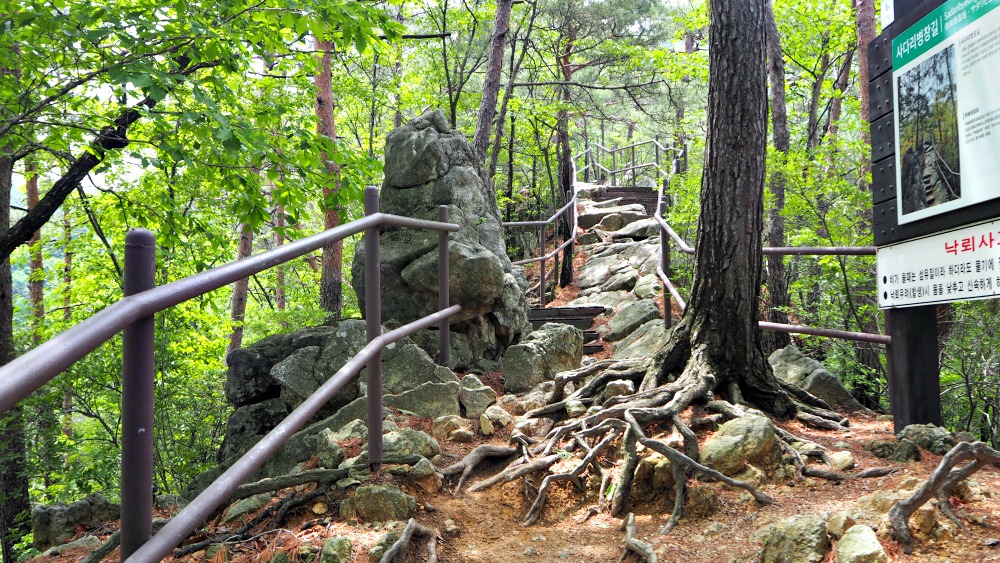 Sadaribyeongchang in Chiaksan National Park
Sadaribyeongchang in Chiaksan National ParkAlso, I listed down the other places which I will visit or explore for my next coming.
- Wonju Climate Change Center
- Hanji Theme Park
- Park Kyongni Literature Park
- Mureum Bangmulgwan (museum)
- Sangwonsa Temple
- Museum SAN
- Baegunsan Natural Recreation Forest
Etc.
my impressions
Yes, I love the area. I think I should stay longer next around to see more details and feel its story.
The temple is very accessible up to the parking area. Anyone who can walk, or cannot walk (but using a baby cart, wheelchair, etc.) can get there quite quickly because the road and pathway are paved and the ascent is not high or steep.
The temple area and everything that surround it is lovely--trees, mountains, stream, cascade, rocks, birds, squirrels, and nature.
It is also economical to come here. If you are coming from Seoul, you only spend less than 40 USD to reach the temple. Besides, it only takes two hours by bus from Seoul to Wonju City.
If you reached this far, I would thank you for reading this article. You’re awesome!
I hope you have memorable and amazing travels!
- Home
- Temples in South Korea
- Guryongsa Temple in Chiaksan Park
Get Exciting Activities
Book one of our exciting activities today to experience the thrill of a lifetime! Take advantage of this opportunity and secure your spot in advance.
Hotel Map Guide
Find your affordable, accessible, and comfortable hotel in Seoul at Agoda.Com. See the hotel map below...
Hotel Booking Guide
Find affordable and amazing hotels on Agoda.com using the search box below. Book now to enjoy great discounts and save!
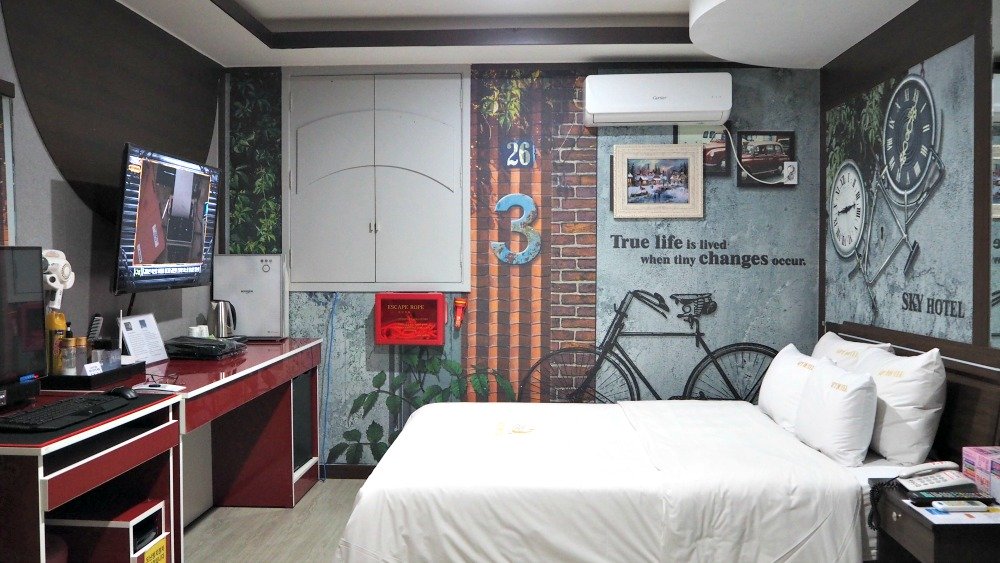
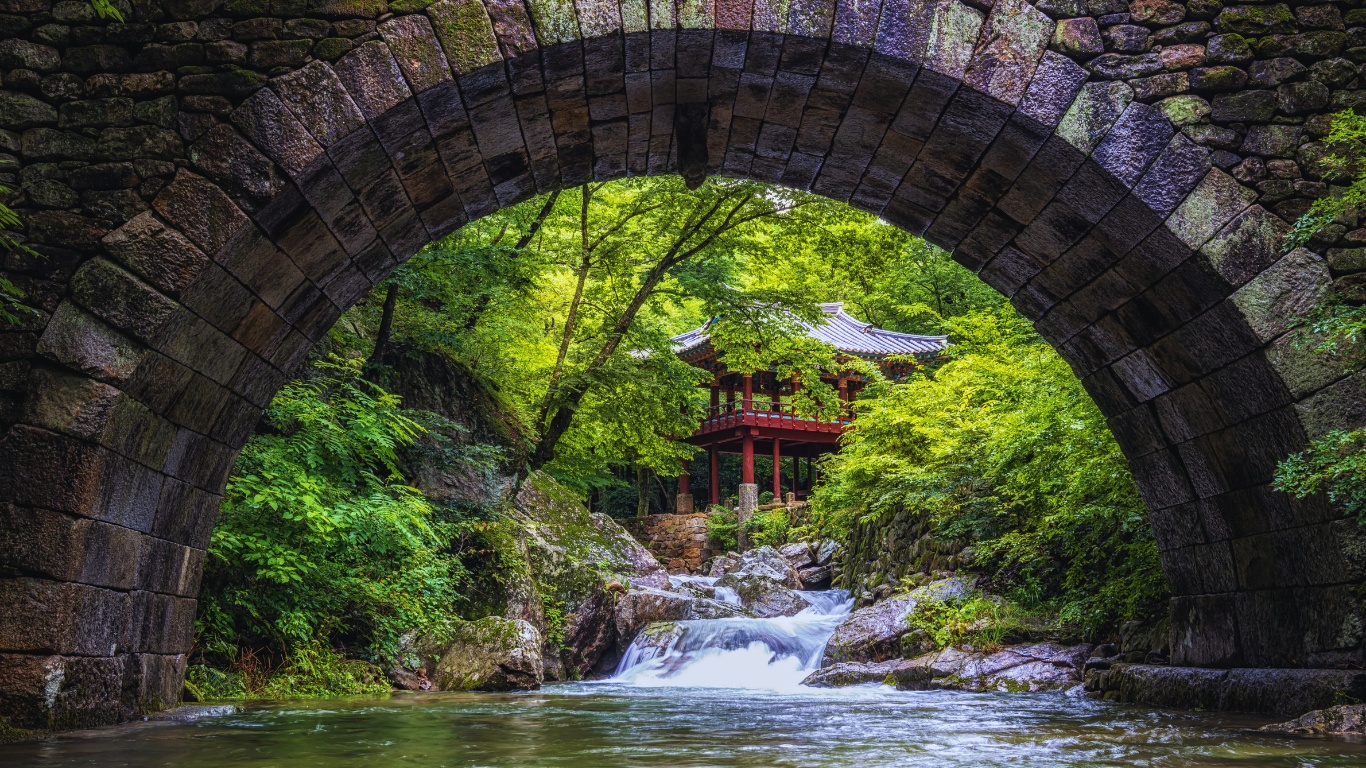
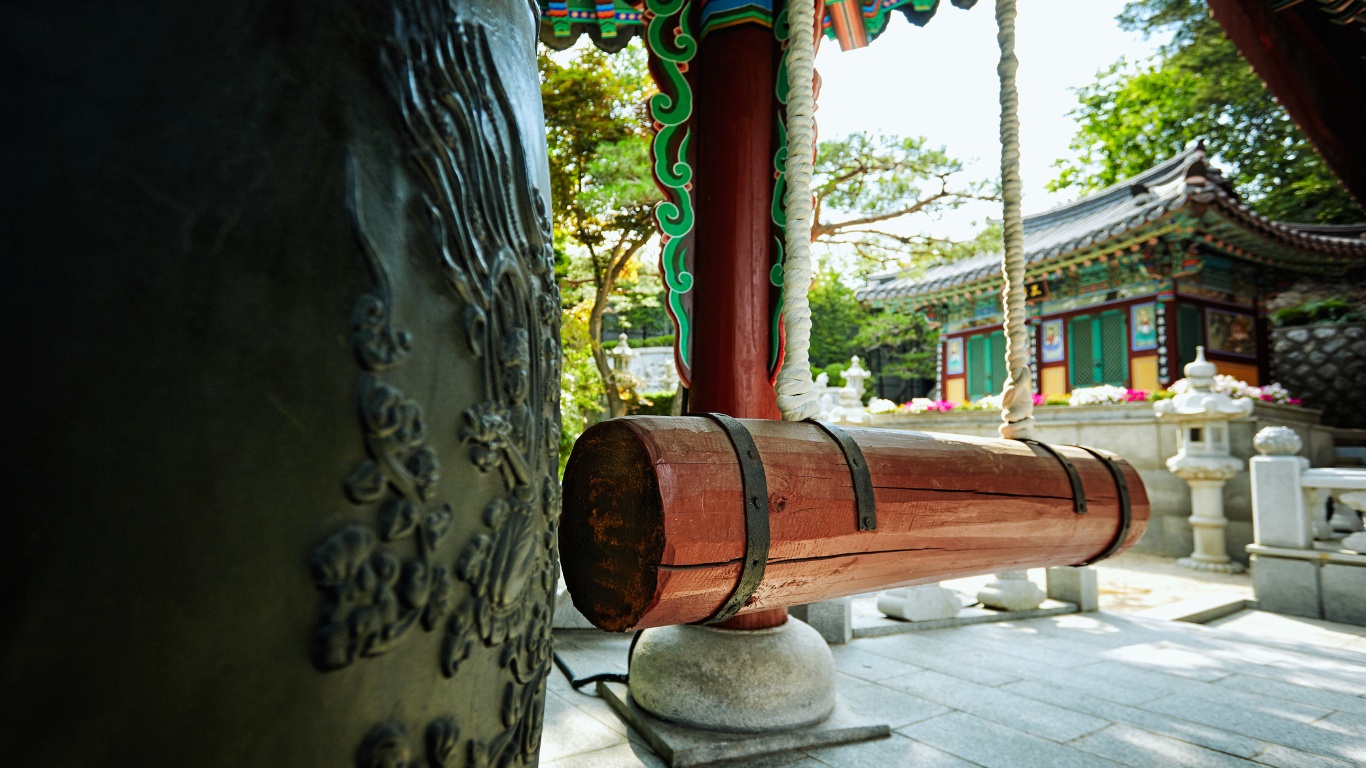





New! Comments
What do you think about this page? Leave me a comment in the box below.